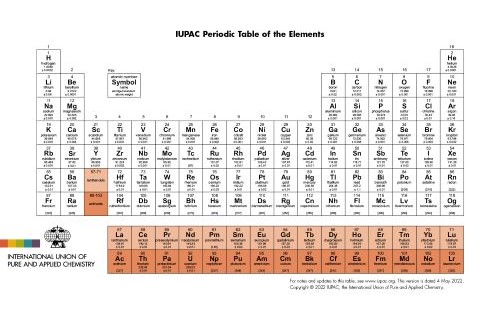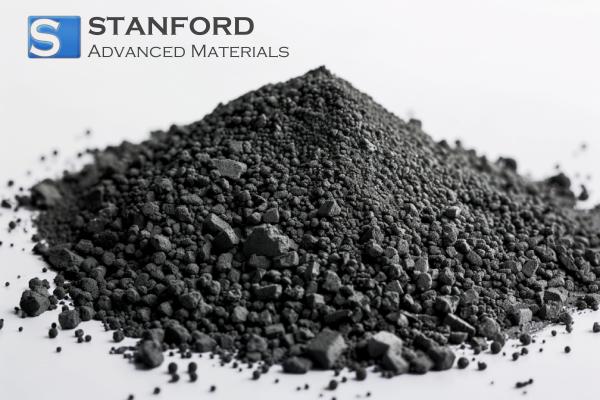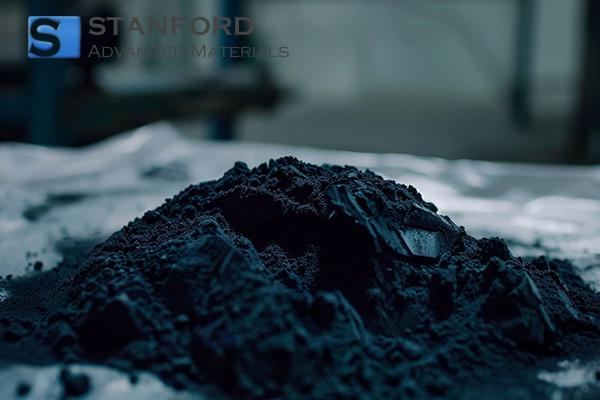끓는점: 일반적인 재료 및 원소
Boiling points of common materials
|
Product |
Boiling point °C |
Boiling point °F |
|
Acetaldehyde CH3CHO |
20.8 |
69.44 |
|
Acetic acid anhydride (CH3COO)2O |
139 |
282.2 |
|
Acetone CH3COCH3 |
56.08 |
132.944 |
|
Acetylene |
-84 |
-119.2 |
|
Alcohol – allyl |
97.2 |
206.96 |
|
Alcohol - butyl-n |
117 |
242.6 |
|
Alcohol - ethyl (grain, ethanol) C2H5OH |
79 |
174.2 |
|
Alcohol - Isobutyl |
107.8 |
226.04 |
|
Alcohol - methyl (methyl alcohol, wood alcohol, wood naphtha, or wood spirits) CH3OH |
64.7 |
148.46 |
|
Alcohol – propyl |
97.5 |
207.5 |
|
Ammonia |
-35.5 |
-31.9 |
|
Aniline |
184.1 |
363.38 |
|
Anisole |
153.6 |
308.48 |
|
Antimony |
1440 |
2624 |
|
Argon |
−185.848 |
-366.53 |
|
Astatine |
337 |
638.6 |
|
Benzene (Benzol) C6H6 |
80.4 |
176.72 |
|
Brake Fluid |
205 |
401 |
|
Bromobenzene |
156 |
312.8 |
|
Butadiene (1,2-Butadiene) |
10.9 |
51.62 |
|
Butyric acid n |
162.5 |
324.5 |
|
Camphor |
204 |
399.2 |
|
Carbolic acid (phenol) |
182.2 |
359.96 |
|
Carbon Bisulfide |
47.8 |
118.04 |
|
Carbon Dioxide CO2 (sublimates) |
-78.5 |
-109.3 |
|
Carbon Disulfide CS2 |
46.2 |
115.16 |
|
Carbon Monoxide |
-192 |
-313.6 |
|
Carbon Tetrachloride (Tetrachloroethane) CCl4 |
76.7 |
170.06 |
|
Chlorine |
-34.4 |
-29.92 |
|
Chlorobenzene |
131.7 |
269.06 |
|
Chlorodifluoromethane refrigerant R-22 |
-41.2 |
-42.16 |
|
Dichlorodifluoromethane refrigerant R-12 |
-29.8 |
-21.64 |
|
Diethyl ether |
34.4 |
93.92 |
|
Diisobutyl |
109 |
228.2 |
|
Diisopropyl ether |
68.4 |
155.12 |
|
Dimethyl sulfate |
186 |
366.8 |
|
Dimethyl sulfide |
37.3 |
99.14 |
|
Dimethylbutane (2,3 – Dimethylbutane) |
58 |
136.4 |
|
Ethane |
-88.78 |
-127.804 |
|
Ethane C2H6 |
-88 |
-126.4 |
|
Ethanol |
78.24 |
172.832 |
|
Ether |
34.6 |
94.28 |
|
Ethyl acetate CH3COOC2H3 |
77.2 |
170.96 |
|
Ethyl bromide C2H3Br |
38.4 |
101.12 |
|
Ethylamine |
16.6 |
61.88 |
|
Ethylbenzene |
136 |
276.8 |
|
Ethylene |
-103.7 |
-154.66 |
|
Fluorine |
−188.11 |
370.6 |
|
Methanol |
64.7 |
148.5 |
|
Nitrogen |
-195.8 |
-320.4 |
|
Phosgene |
8.3 |
46.94 |
|
Phosphoric Acid |
213 |
415.4 |
|
Propanal |
48 |
118.4 |
|
Propane |
-42.04 |
-43.672 |
|
Propanol (2-Propanol) |
82.2 |
179.96 |
|
Propene |
-47.72 |
-53.896 |
|
Propionic acid |
141 |
285.8 |
|
Propylamine |
47.2 |
116.96 |
|
Propylene |
-47.7 |
-53.86 |
|
Propylene glycol |
187 |
368.6 |
|
Saturated brine |
108 |
226.4 |
|
Styrene |
145 |
293 |
|
Sulfur dichloride |
59.6 |
139.28 |
|
Sulfur Dioxide |
-10 |
14 |
|
Sulfuric Acid |
330 |
626 |
|
Sulfuryl chloride |
69.4 |
156.92 |
|
Toluene |
110.6 |
231.08 |
|
Triptane |
80.9 |
177.62 |
|
Water |
100 |
212 |
|
Water, sea |
100.7 |
213.26 |
|
Xenon |
−108.099 |
226.6 |
Boiling points of elements
|
Element |
Atomic Number |
Boiling point °C |
Boiling point °F |
|
Ac |
89 |
1047 |
3197 |
|
47 |
961.93 |
2212 |
|
|
13 |
660.37 |
2467 |
|
|
Am |
95 |
1172 |
2607 |
|
Ar |
18 |
-189.37 |
-185.86 |
|
33 |
817 (under pressure) |
616 (sublimes) |
|
|
At |
85 |
302 |
337 |
|
79 |
1064.43 |
2807 |
|
|
5 |
2300 |
3658 |
|
|
56 |
729 |
1637 |
|
|
4 |
1278 |
2970 |
|
|
83 |
271.3 |
1610 |
|
|
35 |
-7.3 |
58.78 |
|
|
6 |
3527 |
4827 |
|
|
20 |
839 |
1484 |
|
|
48 |
320.9 |
765 |
|
|
Ce |
58 |
799 |
3426 |
|
Cl |
17 |
-100.98 |
-33.97 |
|
27 |
1495 |
2870 |
|
|
24 |
1857 |
2672 |
|
|
55 |
28.40 |
678.4 |
|
|
29 |
1083.4 |
2567 |
|
|
Dy |
66 |
1412 |
2562 |
|
Er |
68 |
1529 |
2863 |
|
Eu |
63 |
822 |
1597 |
|
9 |
-219.62 |
-188.14 |
|
|
26 |
1535 |
2750 |
|
|
Fr |
87 |
27 |
677 |
|
31 |
29.78 |
2403 |
|
|
Gd |
64 |
1313 |
3266 |
|
32 |
937.4 |
2830 |
|
|
1 |
-259.14 |
-252.87 |
|
|
He |
2 |
-272.20 (under pressure) |
-268.934 |
|
72 |
2230 |
5197 |
|
|
Hg |
80 |
-38.87 |
356.58 |
|
Ho |
67 |
1474 |
2695 |
|
53 |
113.5 |
184.35 |
|
|
49 |
156.17 |
2080 |
|
|
77 |
2410 |
4130 |
|
|
19 |
63.65 |
774 |
|
|
36 |
-156.6 |
-152.30 |
|
|
La |
57 |
921 |
3457 |
|
3 |
180.54 |
1347 |
|
|
Lu |
71 |
1663 |
3395 |
|
12 |
648.8 |
1090 |
|
|
25 |
1244 |
1962 |
|
|
42 |
2617 |
4612 |
|
|
7 |
-209.86 |
-195.8 |
|
|
11 |
97.81 |
882.9 |
|
|
41 |
2468 |
4742 |
|
|
Nd |
60 |
1021 |
3068 |
|
Ne |
10 |
-248.67 |
-246.05 |
|
28 |
1453 |
2732 |
|
|
Np |
93 |
640 |
3902 |
|
O |
8 |
-218.4 |
-182.96 |
|
Os |
76 |
3054 |
5027 |
|
15 |
44.1 (white) |
280 (white) |
|
|
Pa |
91 |
1840 |
4027 |
|
82 |
327.50 |
1740 |
|
|
46 |
1552 |
3140 |
|
|
Pm |
61 |
1168 |
ca. 2727 |
|
Po |
84 |
254 |
962 |
|
Pr |
59 |
931 |
3512 |
|
78 |
1772 |
3827 |
|
|
Pu |
94 |
641 |
3232 |
|
Ra |
88 |
700 |
1140 |
|
37 |
39.0 |
688 |
|
|
75 |
3180 |
5627 |
|
|
45 |
1966 |
3727 |
|
|
Rn |
86 |
-71 |
-61.8 |
|
44 |
2310 |
3900 |
|
|
16 |
113 (α) |
444.67 |
|
|
51 |
630.74 |
1635 |
|
|
21 |
1541 |
2831 |
|
|
34 |
217 |
684.9 |
|
|
14 |
1410 |
2355 |
|
|
Sm |
62 |
1077 |
1791 |
|
50 |
231.97 |
2270 |
|
|
38 |
769 |
1384 |
|
|
73 |
2996 |
5425 |
|
|
Tb |
65 |
1356 |
3123 |
|
Tc |
43 |
2172 |
4877 |
|
52 |
449.5 |
989.8 |
|
|
Th |
90 |
1750 |
4787 |
|
22 |
1660 |
3287 |
|
|
Tl |
81 |
303.5 |
1457 |
|
Tm |
69 |
1545 |
1947 |
|
U |
92 |
1132.3 |
3745 |
|
23 |
1887 |
3377 |
|
|
74 |
3407 |
5657 |
|
|
Xe |
54 |
-111.9 |
-107.1 |
|
39 |
1522 |
3338 |
|
|
Yb |
70 |
824 |
1193 |
|
30 |
419.58 |
907 |
|
|
40 |
1852 |
4377 |
Note: The boiling points listed above are all under standard atmospheric pressure.
Boiling Point: FAQs
1. What is the boiling point?
The boiling point of a substance is the temperature at which its vapor pressure equals the pressure exerted on it by the surrounding atmosphere. At this temperature, the liquid changes into a gas throughout the bulk of the liquid.
2. How is boiling point determined?
The boiling point is affected by the pressure of the surrounding atmosphere. As atmospheric pressure changes, so does the boiling point of a substance. Generally, higher pressure increases the boiling point, while lower pressure decreases it.
3. Why do different substances have different boiling points?
Boiling points vary based on the strength of intermolecular forces within substances. Stronger intermolecular forces generally result in higher boiling points because more energy is required to break those bonds and convert the substance into a gas.
4. How is boiling point used in everyday life?
Boiling points are crucial in cooking to determine the required temperature to cook various foods properly. In laboratories, boiling points help identify and purify substances through techniques like distillation.
5. What factors can affect boiling points?
Besides atmospheric pressure and intermolecular forces, purity, altitude, and dissolved substances can influence boiling points. Impurities often elevate the boiling point, while dissolved substances might lower it.
6. Why is the boiling point of water important?
The boiling point of water at 100°C (212°F) at standard atmospheric pressure is crucial for various everyday tasks like cooking, sterilization, and determining the altitude of a location.

 바
바
 비즈 & 구체
비즈 & 구체
 볼트 및 너트
볼트 및 너트
 도가니
도가니
 디스크
디스크
 섬유 및 원단
섬유 및 원단
 영화
영화
 플레이크
플레이크
 폼
폼
 호일
호일
 과립
과립
 벌집
벌집
 잉크
잉크
 라미네이트
라미네이트
 덩어리
덩어리
 메시
메시
 메탈라이즈드 필름
메탈라이즈드 필름
 플레이트
플레이트
 파우더
파우더
 Rod
Rod
 시트
시트
 단결정
단결정
 스퍼터링 타겟
스퍼터링 타겟
 튜브
튜브
 워셔
워셔
 전선
전선
 변환기 및 계산기
변환기 및 계산기





 Chin Trento
Chin Trento



